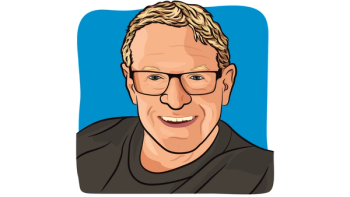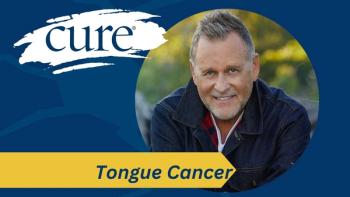
How Love Helped Me Overcome my Cancer Diagnosis
Key Takeaways
- A DVT diagnosis alongside cancer significantly increases health risks, necessitating immediate medical intervention to prevent potentially fatal complications like pulmonary embolism or stroke.
- Initial treatment for DVT involves self-administered low-molecular-weight heparin injections, which can be daunting for patients already dealing with cancer.
Facing two life-threatening diagnoses, I overcame fear of self-injections by leaning on love, encouragement and determination to save my life.
Could I be more terrified? My life-threatening cancer diagnosis upgraded to a more immediate life-threatening diagnosis — a deep vein thrombosis (DVT). A DVT is a blood clot in a vein — in my case, the subclavian vein around my Port-a-Cath — that can be life-threatening if left untreated. When my diagnosis came, it was a whirlwind of medical actions, fearful emotions and anxious questions. One of the most surprising medical recommendations required that I administer self-injections as part of my treatment. Little did I know this necessity would reveal profound personal weakness and require immense courage.
It all began with a persistent throbbing ache in my arm. At first, I dismissed it as usual pain following the surgical implant of the Port-a-Cath needed for chemotherapy infusions. As days went by, the pain didn’t subside — in fact, it began to worsen. At my routine pre-chemo medical appointment, the nurse practitioner sent me for a Doppler ultrasound, which revealed a new threat: in addition to ovarian cancer, I had a DVT. My doctor explained the severity of the situation. A DVT isn’t just about discomfort; if the clot breaks loose, it can travel to the lungs and cause a pulmonary embolism or travel to the brain and cause a stroke, both potentially fatal conditions.
The treatment plan was clear: anticoagulation therapy to thin the blood and reverse the clot. But there was a twist: the initial phase of treatment would involve daily self-injections of low-molecular-weight heparin to stabilize the condition before transitioning to oral anticoagulants.
My DVT diagnosis came late in the day after all medical offices were closed, so I was immediately admitted to the local hospital to learn self-injections. The threat of a DVT elevated my anxiety, which raised my blood pressure, further restricted the space in my vein and amplified my pain. Multiple threat — cancer, a DVT and giving myself an injection — had me spinning in a vicious cycle of pain and anxiety.
The night nurse described every step at the first injection, clarifying that I was expected to demonstrate the next injection at the prescribed time. After she administered that first dose of blood thinner into my belly, I promptly vomited because of my extreme anxiety. Advocating for myself, I asked for anti-nausea meds; they were denied because my admitting physician did not order them. I asked for more pain meds; this was also denied because it was too soon, even though I had barfed up the earlier dose. Knowing my inclination to vomit, I begged the nurse to get an order for the meds to be administered intravenously. A few hours later, after the pain medication injection, my pain decreased enough for me to fall asleep.
The morning to demonstrate a self-injection arrived too soon. The day nurse, a compassionate individual, gave me some control over the process. Her gentle but persistent encouragement kept moving me toward completing this task — easy for some but frightfully difficult for me. Despite additional meds for pain and nausea, the fear of injecting a needle into myself was so overwhelming that I sobbed during the puncture and finished with dry heaving. After demonstrating that I could inject the life-saving heparin, I was discharged home to continue this task — alone.
I arranged tools from the self-injection kit on the kitchen table: an alcohol swab to sterilize the injection site on my belly, the syringe loaded with the prescribed dose of blood-thinning medication, and the needle. I chose a spot on my belly, swapped it with alcohol, and gave myself a pep-talk as I picked up the syringe and needle. I had to put it down because sobbing moved my body erratically enough that I could jab myself anywhere but the intended target. To release tension, I rose and paced the floor. I walked to the bathroom, splashed cool water on my face, and looked at my reflection in the mirror. I asked myself, “What can I do to accomplish this injection?”
Inspired, I located a handmade poster from friends with pictures and encouraging words. I gathered a stack of cards and letters from family with positive sentiments that made me feel loved. I carried these reminders to the kitchen table. For me, these items became a vital addition to the medical injection kit. Surrounded by reminders of all the people dear to me, I inhaled deeply. In that breath, I found the courage to inject the life-saving medication successfully. At a very low point in my cancer journey, love helped me overcome my fears. Threats of cancer and a DVT remained, but with the success of my first solo self-injection completed, I moved from feeling helpless to feeling hopeful.
For more news on cancer updates, research and education,




